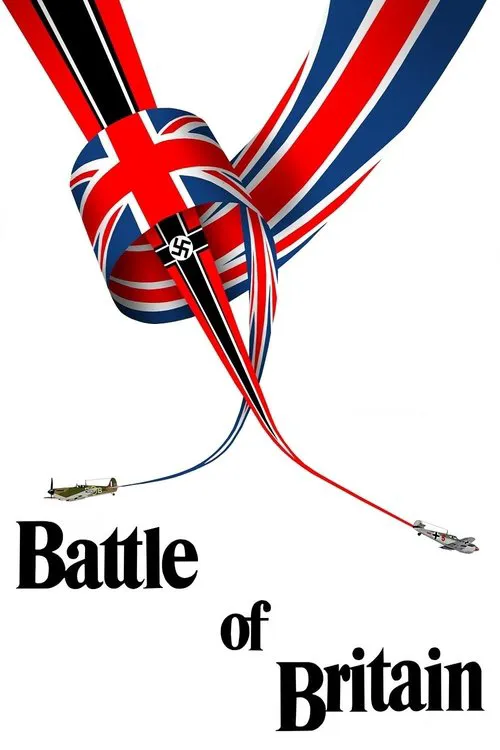Battle of Britain

Plot
In a time when the world was on the brink of chaos, the fate of a nation rested on the wings of its brave pilots. The year was 1940, and the skies above Britain were filled with the rumble of engines and the chatter of radio communications. The Royal Air Force (RAF), the backbone of British defense, was preparing to face the might of the Luftwaffe, the air force of Nazi Germany, in what would become one of the most pivotal battles of World War II – the Battle of Britain. As the German war machine, led by the infamous Hermann Göring, began its march across Europe, the British government, led by Winston Churchill, was determined to hold its ground. The Channel, a strategic waterway separating Britain from the European mainland, stood as a formidable barrier, but an airborne invasion was always a possibility. The German air force had already demonstrated its mastery of the skies in Poland and France, and the British knew that they had to act swiftly to prevent a repeat of history. On July 10, 1940, Hitler launched his first major assault on Britain, code-named Operation Eagle, which consisted of a mass bombing campaign against British airfields, military installations, and towns. The Luftwaffe, with its sleek Messerschmitt Bf 109 and 110 fighter planes, had the upper hand in numbers, experience, and technology. However, the RAF, despite its limited resources, was determined to defend its skies. Leading the defense was Air Chief Marshal Hugh Dowding, a seasoned veteran of the air war, who had spent years modernizing the RAF and preparing for this very moment. Under his command were scores of brave pilots, many of whom were just a few months out of flight school, but possessed an unwavering commitment to their country. Among them were Squadron Leaders Park, a natural leader and seasoned fighter pilot, and Squadron Leader Bader, a charismatic veteran of the Spanish Civil War who had lost his legs in a crash but refused to give up. The British strategy was to defend the key areas around London, such as the airfields at Biggin Hill and Kenley, which served as hubs for fighter squadrons. The Luftwaffe's first major thrust, on July 18, 1940, targeted these airfields, and the skies above were filled with the roar of engines and the crackle of gunfire. The Germans, with their superior numbers and tactics, seemed almost invincible, but the RAF pilots refused to give up. They fought with all their might, taking advantage of the narrow windows of opportunity and making the most of their training and experience. As the battle raged on, both sides began to pay the price. The Luftwaffe suffered heavy losses, particularly in the form of experienced pilots, which began to erode its advantage. Meanwhile, the RAF, despite its initial setbacks, continued to adapt and innovate, employing new tactics and technologies to counter the German threat. One such innovation was the introduction of radar systems, which enabled the RAF to detect incoming German aircraft and give their pilots precious minutes to respond. The turning point came on August 13, 1940, when the Luftwaffe launched a massive raid on London, known as the "Battle of Britain Day." The RAF, with their advanced radar system, were prepared for the attack and sent up their most seasoned pilots to engage the enemy. The ensuing dogfight was fierce and intense, with planes from both sides clashing in mid-air. The British managed to inflict heavy losses on the Germans, and for the first time, the initiative began to shift in their favor. In the following days, the Luftwaffe continued to bomb British cities, but its losses mounted, and its momentum began to falter. The British, meanwhile, pressed their advantage, launching raids against German airfields and supply depots. By mid-September 1940, the Luftwaffe was in full retreat, its plans for an invasion foiled by the bravery and determination of the RAF. The Battle of Britain, which had lasted for a tense 12 weeks, had come to an end. Britain had emerged victorious, thanks to the sacrifices of its pilots and the bravery of its people. The Luftwaffe, decimated by losses, could not recover in time to launch a meaningful invasion. The Nazi war machine had been halted in its tracks, and the world breathed a collective sigh of relief. As Churchill famously put it, "Never in the field of human conflict was so much owed by so many to so few." The Battle of Britain had been won, but the real test of the British people was only just beginning – to survive the coming winter and prepare for the day when the Nazi juggernaut would return.
Reviews
Recommendations




